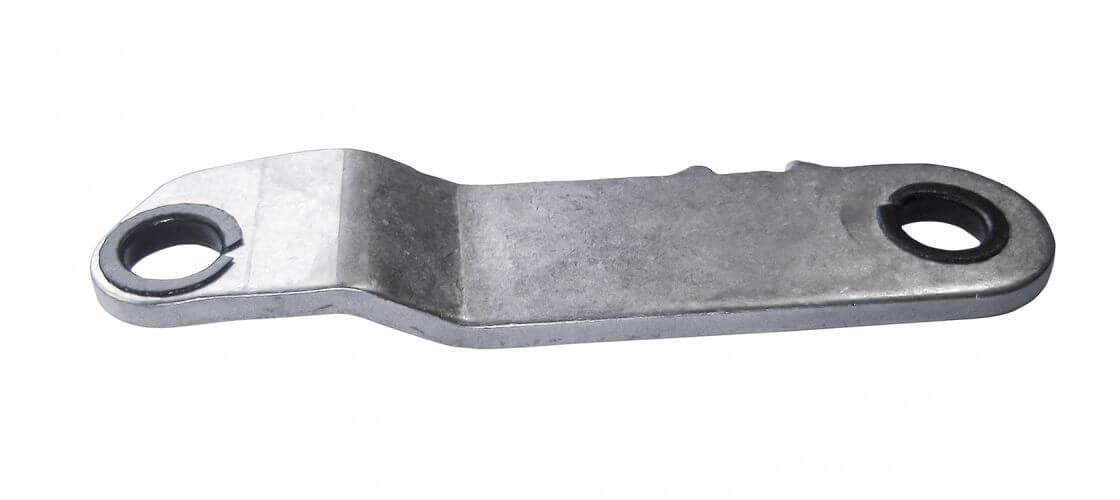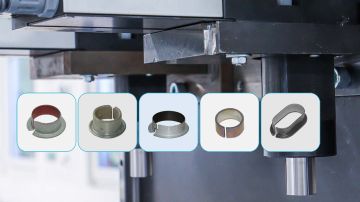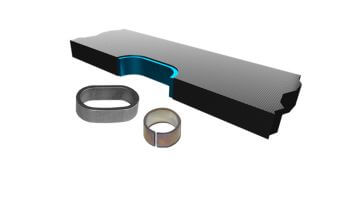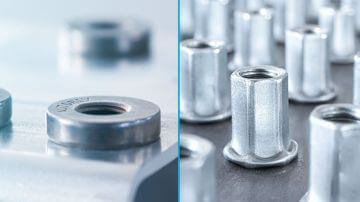Flanging
Function elements are fastened by tilting in two steps.
In flanging as a joining process of fasteners, the protruding part of a function element is tilted parallelly to the surface of the component. Function elements are often tubular, such as plain bearing bushings or other bushings. In those cases, it is often necessary to recalibrate the fit of an already tightened fastener. The flanging of elements establishes centering, passages through hollow spaces, ducts and bearings, etc.




